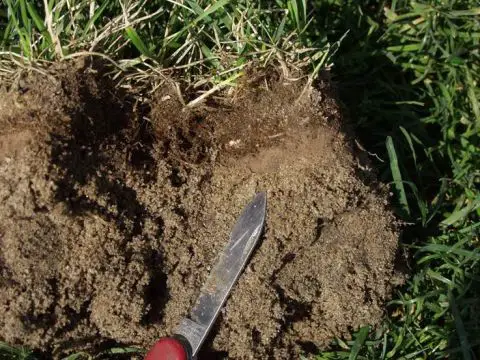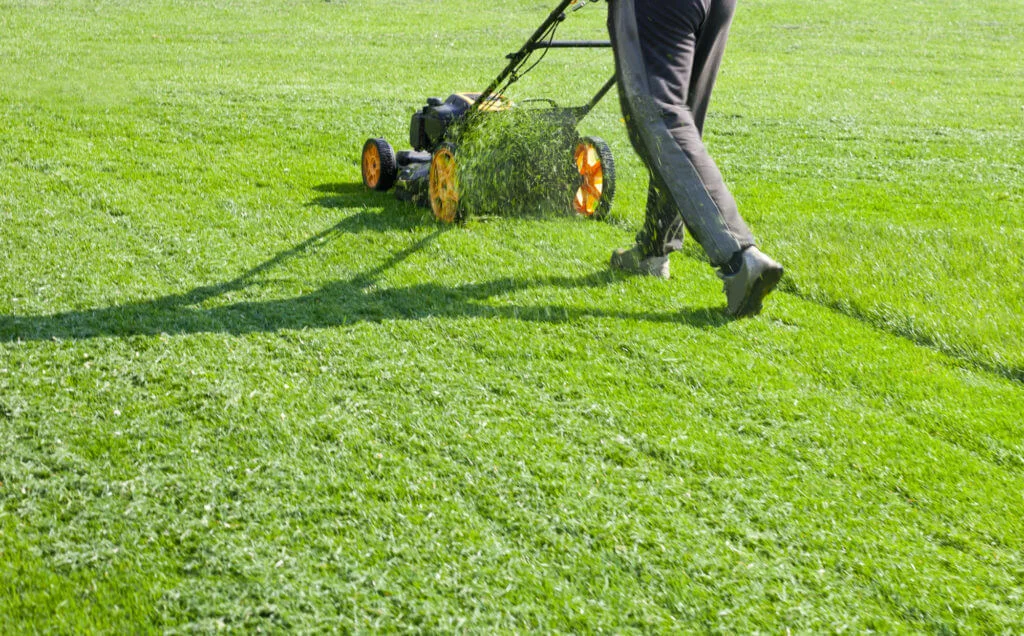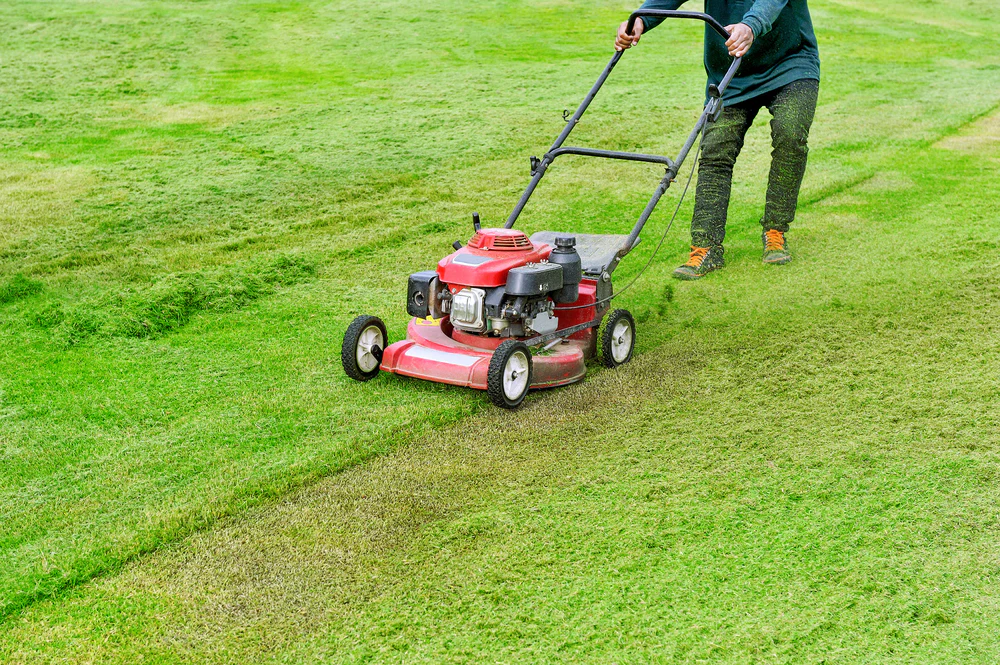When Is The Best Time To Dethatch Your Lawn?
Last Updated on November 5, 2020 by Duncan
You know all the benefits of dethatching your lawn:
You remove the dead layer of grass roots found between the grass and topsoil layer hence allowing the healthy grass blades to flourish.
Dethatching also loosens the top layer of the soil, allowing air and moisture to penetrate deeper into the roots of your lawn.
Armed with this information, the issue is not whether you should dethatch your lawn, the question is, when is the best time to dethatch your lawn?
How to determine whether your lawn needs dethatching

Not all thatch is bad for your lawn. A thin thatch layer can be good as it insulates the grass roots, hence improving your lawn’s wear tolerance.
The thin layer also leads to lower soil temperatures, and the soil under the thatch tends to retain more moisture resulting in an overall, green, healthy lawn.
When thatch begins to accumulate, it begins to harbor disease organisms and insects, making your lawn more susceptible to drought and disease damage.
A thick thatch layer also results in decreased rooting and increased potential for scalping.
To determine whether you should dethatch your lawn, you need to measure the amount of thatch between the soil surface and green vegetation.
To do this, remove a two-inch deep wedge from your lawn. You can use a knife or any other object.
If the amount of thatch is more than one-half inch, your lawn is ready for dethatching.
When is the best time to dethatch your lawn in Minnesota?
Most of the grass in Minnesota is a cool-season grass, and the best time to dethatch it is early spring or early fall.
When dethatching in fall, do it as early as possible to give the grass enough time to grow and re-establish its roots before frost begins to form.
When is the best time to dethatch your lawn in Wisconsin?
The ideal time to dethatch your lawn in Wisconsin is late summer or early fall.
At this time, the temperatures are still warm, and the air is cool, promoting better grass growth.
Warm-season weeds are also less likely to be active at this time, giving your grass time to establish itself before the winter temperatures set in and stop its growth.
When is the best time to dethatch your lawn in Michigan?
Most grasses in Michigan are cool-season grasses meaning they grow best in spring and fall when the air is cool and the soil warm and moist.
This makes it the best time to dethatch your lawn as a Michigan homeowner.
By dethatching your lawn at this time, you give your grass enough time to develop strong roots before the ground freezes.
Dethatching Vs. Aeration. What is the difference?
Many new homeowners can’t tell the difference between dethatching and aeration. Are the two the same? Absolutely not!
When you are dethatching your lawn, you remove the dead layer of grass roots found between the grass and soil’s top layer.
On the other hand, aeration involves punching holes in your lawn, creating passageways for air, water, and nutrients.
While you might remove some thatch when aerating, you don’t remove much of it as when dethatching.
How to dethatch your lawn

If you have ascertained your lawn is ready for dethatching, you should go ahead and proceed with the dethatching process.
You can dethatch your lawn in two ways: use a mower mounted with rake dethatchers and using a rotary operated dethatcher.
When using mower mounted tine rake dethatchers, you mount a dethatcher to the front of your lawnmower, and the dethatcher tines pick and pull out the thatch.
As the mower does this, it vacuums the debris and puts it in its bagger.
The cool thing with this method is that you remove the old grass and cut the grass and bag it, so you don’t have to make another round to mow the lawn.
This method is also much cheaper.
Using a rotary operated dethatcher is more invasive to the lawn, so only do it if you have a thick layer of thatch.
Can you prevent thatch from forming?
Prevention is always better than cure, so it’s always better to prevent thatch from forming than removing it.
If you are wondering whether this is possible, yes, it is, and here is how to do it:
Apply the right amount of fertilizer
Part of the reason you have a lot of thatch is you have a lot of grass growing on your lawn.
To cut this, apply only enough fertilizer to maintain your lawn’s desired growth and color.
To tell the amount and type of fertilizer you need to apply, have your soil tested in your local laboratory.
In addition to applying the right fertilizer, you also should apply the fertilizer at the right time.
For example, it’s wise you apply it in fall instead of spring as fall fertilization has resulted in less rapid grass growth.
Aerate your soil
Aerating the soil directly removes thatch from your lawn and, at the same time, ensures better air and moisture penetration, which aid in deeper and healthier root systems that stimulate the microbial activity involved in the decomposition of the thatch layer.
So the better aerated the soils are, the more microbial activity you have; hence, you have to deal with the less thatch.
Mow more frequently
When you mow your lawn more frequently, you always have less than 1/3 the leaf height, which means you don’t need to bag the clippings.
Since the clippings are small, they decompose rapidly, recycling the nutrients back into the grass, leaving you with no thatch to remove.
As you are leaving clippings behind, distribute them evenly. Don’t deposit them in clumps. To have an easy time, use a mulching mower to do it.
Stay away from pesticides.
As much as you want to have a healthy, pest-free lawn, you should avoid using pesticides on your lawn.
This is because pesticides affect the microbial and earthworm populations necessary for decomposing the thatch layer.
If you have to use pesticides, use them when it’s necessary.
This is after all other possible measures have failed, and you have ascertained that the pest problem can only be solved with chemicals.


